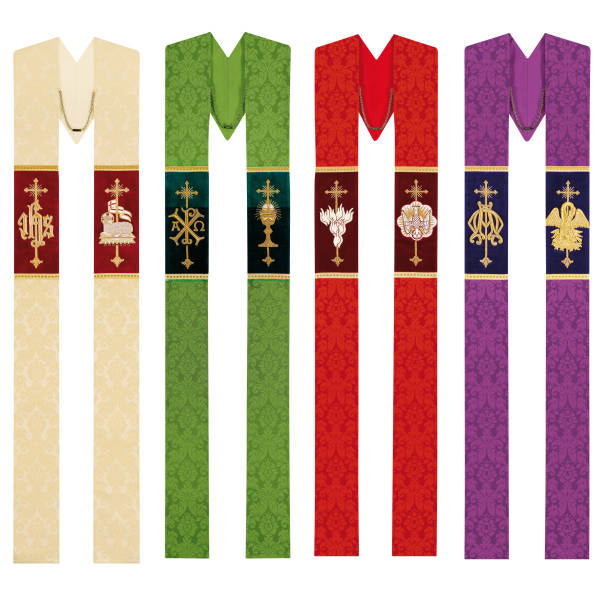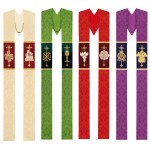 Stoles come in different shapes and sizes! These may also depend on the tradition being upheld! | Image source: Vanpoulles
Stoles come in different shapes and sizes! These may also depend on the tradition being upheld! | Image source: Vanpoulles
You may have seen them being used in church. At the same time, you must have gotten curious about what they’re all about. That’s why we are going to take a look at what church stoles are and why they’re important!
Stoles play a crucial role as part of church vestments. They are considered sacramentals, or essential items to be used in sacraments such as confession, matrimony, and the Holy Eucharist.
The practice dates back to the early Church, when a stole would be used—of course—by clerics when administering the sacraments to both proselytes and devotees. The name comes from the Latin stola and the Greek stolē, both which mean “garment” or “equipment.” Stoles was designed to be somewhat like shawls to be worn over one’s shoulders and used to be very large. However, over time, they had become smaller and began to have elaborate designs.
Nowadays, stoles appear wider, made from many different materials and are designed for comfort and durability.
In the Roman Catholic tradition, stoles indicate one’s membership in the Holy Orders. Anyone who dons a stole is part of the diaconate or the priesthood. Therefore, they are a determining factor when it comes to identifying of a person’s standing in the Church.
In the Anglican Communion, much of the traditional vestments were thrown away during the reformation—including stoles. However, the Oxford Movement started an initiative to bring back pre-reformation traditions, believing that this move would help Anglicanism go back to its basic foundation, similar to Roman Catholic customs.
The Eastern Orthodox Church uses various stoles. An orarionis worn by the deacon while an epitrachelion is worn by the priest. Bishops wear what is called an omophorion. This variation makes it easier to distinguish the ranks of the Eastern clergy.
While stoles may not seem too important on a superficial level, they are still very much vital within the various faiths practiced throughout the world.


